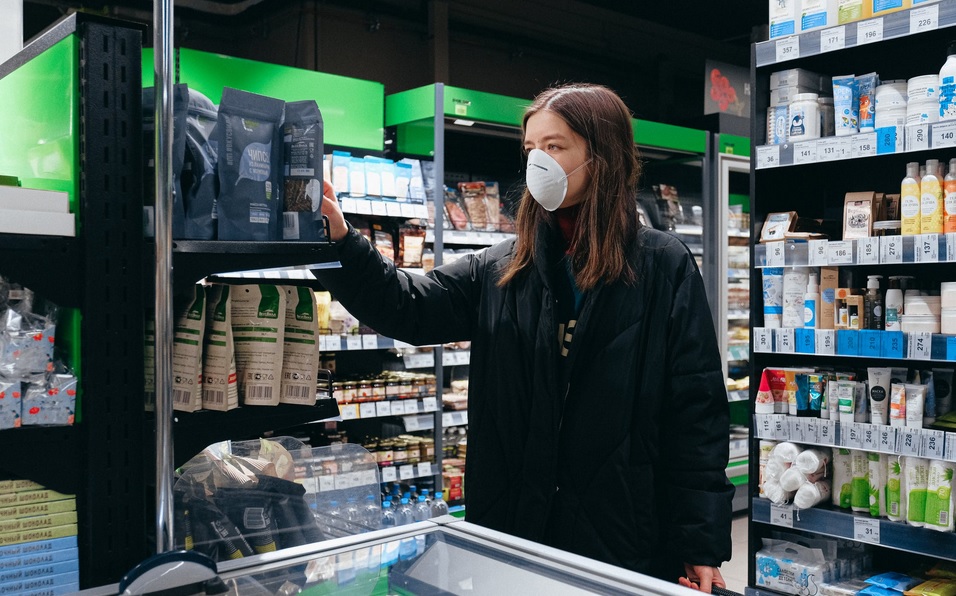NordenBladet – Packages of food substances often say the product is “packed in a gas environment”. As a rule, gases are regarded as something chemical-harmful, but this still depends on what gas it exactly is. Packing in a gas environment (MAP – modified atmosphere packaging) is a natural alternative to adding artificial preservatives to food substances.
Applying correct and proper packing principles enables to keep the quality of the preserved foodstuffs, semi-manufactured products and ready-made products high. Non-packaged raw material or products are not protected against contamination. Depending on the profile of the professional kitchen either packaging with air, airtight packaging or packaging in a gas environment is used.
In packages that contain air (DYNO packages) the raw material and products are protected against additional contamination, however, such a package does not halt the life of the microorganisms that already populate it, including the multiplication of the microorganisms.
Neither does airtight packaging aka vacuum packing, or packing in a gas environment (MAP-package) inhibit the life activities of all microorganisms. Aerobic moulds are microorganisms that consume oxygen (aerobic), they do not reproduce in vacuum sealed packaging, since in vacuum packaging the oxygen that they need for their life has been removed. Yet the microorganisms that do not consume oxygen (anaerobic), for example anaerobic bacteria and yeasts can go on living. Raw material and products that are packaged in a gas environment are protected against contamination, while instead of air the package contains carbon dioxide (CO2) or a mixture of carbon dioxide and nitrogen. That will inhibit the life of many but not all microorganisms.
Packaging in a gas environment is used first of all to extend the shelf life of food substances many times, it will maintain their fresh appearance, taste and structure. Food processing gas is a user-friendly method for packaging that is used around the world with the aim of extending the shelf life of meat, fish, cheese, ham, salads, fruit and vegetables, pasta products, bread, snacks, ready-made food as well as many other food substances. In some cases the added gas will help maintain the original colour of the food substances. For example MAP-environment packaged fresh meat will maintain its red colour and will not turn gray due to added oxygen. This avoids adding chemical preservatives in the list of ingredients. Besides packaging, the food industry uses gases also for carbonating drinks – adding carbon dioxide. Also, the food industry widely uses solid carbon dioxide or dry ice.
The gas environment will be selected based on the properties of the packaged food substance. In products with high moist and low fat levels the growth of microorganisms must be slowed down. The solution to that is replacing air with the mixture of carbon dioxide and nitrogen in the package. It is exactly the carbon dioxide that inhibits the activity of bacteria and has a preserving effect on the food substance. Should the product have a high fat level and a low water level, the product must be kept from oxidation. This is because fats rancidificate. On that occasion the main component of the protective gas is nitrogen – N2 (E941). Inert gaseous nitrogen is used in packaging in order to eliminate oxygen and thus avoid oxidation. Pure nitrogen is used for example for packaging salted peanuts and milk powder, those will last up to ten months longer thanks to such packaging.
The most important part in the packaging to a gas environment is played by carbon dioxide – CO2 (E290), since exactly this gas that slows down microbiological activity by dissolving in the water and fat in the food substance, has an impact on most microorganisms like moulds and anaerobic bacteria. Therefore gas will decrease the pH-level of the food substance. Pure carbon dioxide is used in packaging bread and white bread, this will extend their shelf life four times. A negative side of using carbon dioxide is that it can be dissolved in the product, therefore the products might suck the surrounding package into vacuum if the choice of the gas mixture was incorrect.
In packaging, oxygen O2 (E948) does more damage than it helps. To inhibit growth of aerobic microorganisms, the package should contain less than 1 percent oxygen, yet normal air contains 21% oxygen. However, there are exceptions, for example oxygen will help maintain the red colour of meat. Mostly, in packages, mixtures of gases instead of pure gases are used. For example, sausage packages contain 20% carbon dioxide and 80% nitrogen.
Conclusion. Using food processing gas is completely harmless for the consumer and it ensures better food quality. The main point is that the manufacturer need not use preservatives to prolong the shelf life of the product. Also the food need not be heated at a high temperature, nor does it have to be frozen, to preserve longer. The food is more fresh, healthier and will preserve longer, since the gas will hinder chemical, enzymatic as well as microbiological deterioration.
Photo: Pexels
Source: NordenBladet.ee
Read also:
E-additives in food – the preservatives you ought to avoid
